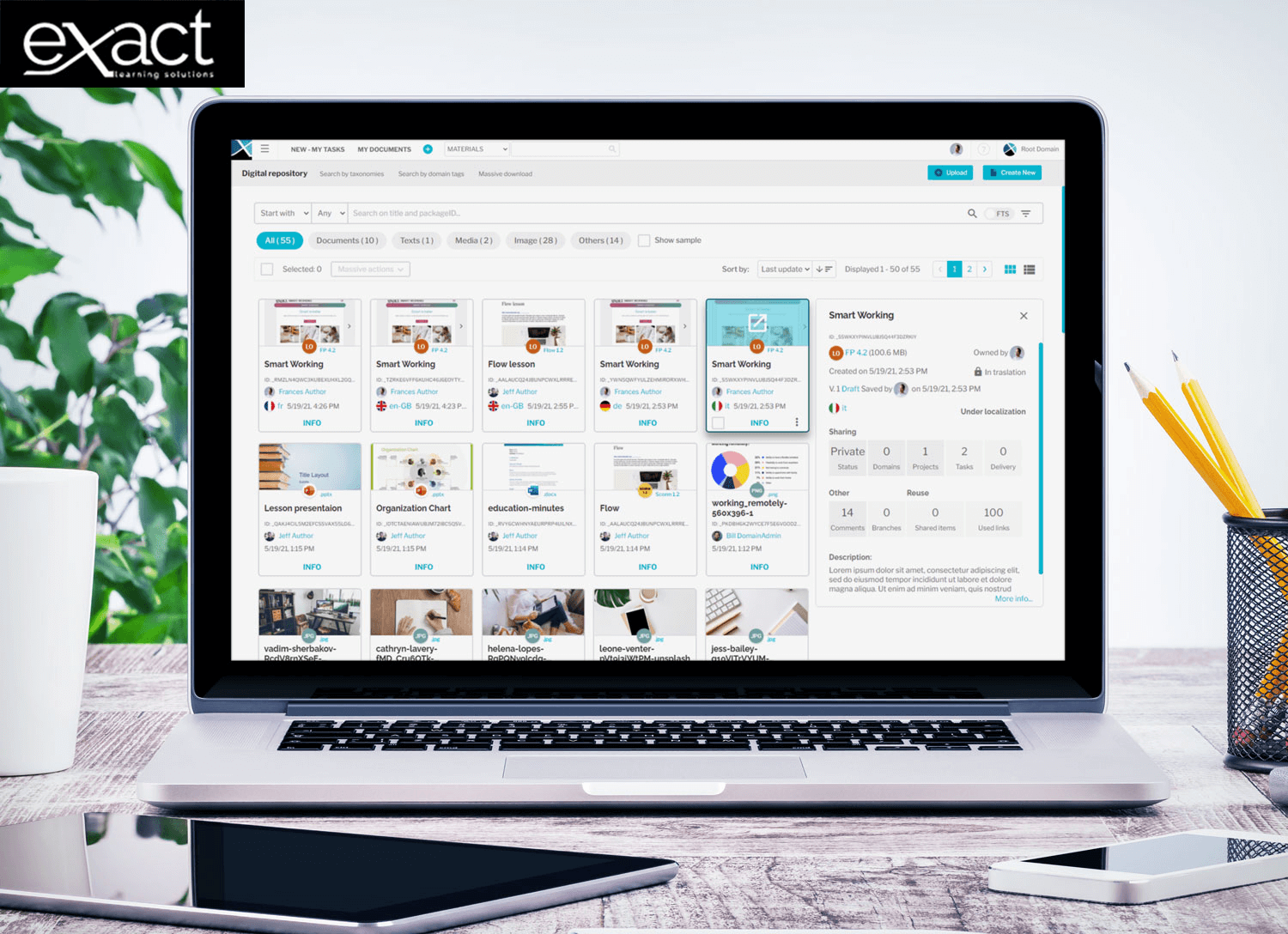Glossary
- Content Delivery/Distribution Network (CDN): a geographically distributed network of proxy servers and their data centers, which aims to provide high availability and performance by distributing the service spatially, relative to end users.
- Learning Content Management System (LCMS): a content-centric system that focuses on the authoring and management of content to be used – and possibly reused – during learning processes.
- Learning Management System (LMS): a learner-centric system that focuses on the management of learning processes, from planning to delivery and analysis.
- SCORM cross-domain issue: SCORM requires that the content and player reside in the same domain; this usually prevents organisations from keeping courses on one server while delivering them to other LMS.
What you need
Today, knowledge (or ‘content’) is, primarily, easy to distribute. It can be shared both within and outside an organization, under different settings, on various delivery platforms and HR solutions. Field staff need access to up-to-date material, on demand. Simultaneously, the training and learning organization must control the consistency and quality of all material that circulates in its complex, geographically-dispersed, operations. This results in a strong need for a single-source, centralized, content strategy for every growing or emerging enterprise.
Potential problems
If SCORM e-learning content is hosted in the same domain as the LMS, then the content can easily communicate with the LMS’ API to send or extract information.
If, however, the content is hosted on a remote server in a separate domain, then the ability of the content to communicate with a LMS’ SCORM API is hindered by this restriction, meaning that the user’s score and completion status (and other performance feedback), are not passed back to the LMS. Therefore, this becomes a problem when content is produced into one system, but needs to be delivered over (other) different systems.
Our two-words solution: Dynamic Publishing
Our proposal is a Dynamic Publishing strategy, envisaging that a SCORM “skinny package” containing only a link to the original and physical content, is passed from the eXact LCMS Digital Repository to a Content Dispatcher module.
From here it is delivered through a CDN to each client’s LMS, where SCORM tracking data are collected and made available for suitable analysis and reporting back to the eXact LCMS.
In this way the LCMS will keep full control of the content usage information, including how many users accessed it, and their feedback. The original content remains untouched, and the client avoids any disruption or misuse of the content itself.
Overcoming the cross-domain issue
Thanks to Dynamic Publishing, content and any related tracking data remain in the producer’s LCMS, while clients can play them from any LMS of their choice. Content can be centrally updated and tracking data are at the disposal of the producer, who can monitor their actual usage, thereby overcoming SCORM cross-domain issues.
Benefits
- Effective maintenance of content updates
- Efficient management of storage space and bandwidth consumption
- Flexible re-packaging and re-sequencing of content
- LMS platform independence
- Wider re-usability of content
- Open accessibility of content
- Innovative business modelling
- Innovative Skills personalization solutions
- Innovative Media personalization solutions
- Overall Content Lifecycle Strategy optimization
Get in touch
Static and Dynamic Publishing integrations have been implemented for many commercial and open-source Learning Management Systems (LMS) to date, including SuccessFactors™, SumTotal™, Saba™, Cornerstone On Demand™, e2train™, Blackboard™, Sakai™, and Moodle™.
For additional information about Static and Dynamic Publishing integrations, and/or on the full eXact learning LCMS modules and capabilities, please don’t hesitate to email us!


